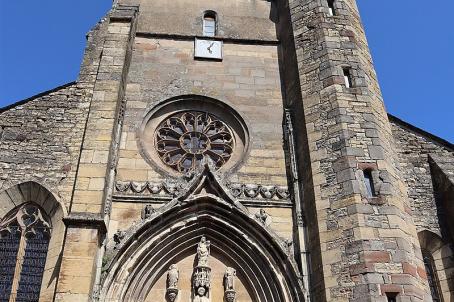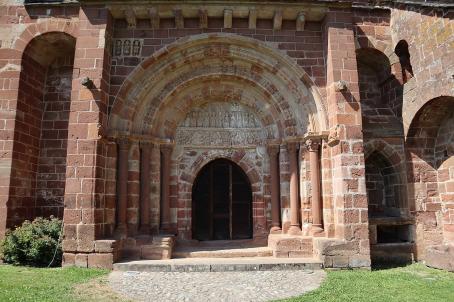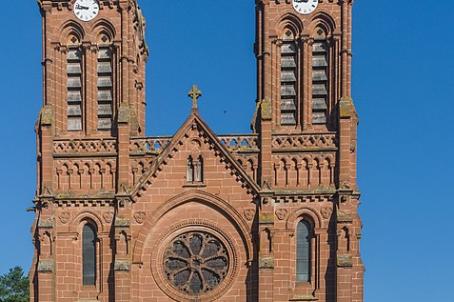Church of Saint-Michel, Saint-Urcize
Built in grey granite and reddish tuff, it includes a choir surrounded by an apse chapel ambulatory, unique in the Haute Auvergne.
Built in grey granite and reddish tuff, it includes a choir surrounded by an apse chapel ambulatory, unique in the Haute Auvergne.

Located at the foot of the Aubrac, in the fertile Lot valley, Saint-Côme-d'Olt is a village whose almost circular physiognomy has kept its medieval character. Its city was fashioned around the ancient ramparts which have become the exterior facades of the houses. Three fortified entrance doors; the Porte de la Barrieyre, Thèron and Porte Neuve allow access to its centre, through very typical alleys. In its centre, it houses the two primordial monuments of the site: its twisted bell-tower church and its castle, former manor of the Sires de Calmont built in the 11th century. This church succeeds a first church, located further away, which has become too demanding. In 1521, the request for construction was authorized by the lord, since the Church becoming too small. Since then, some redevelopment works have taken place.

This Romanesque church was built between the end of the 11th and the beginning of the 12th century. It was placed on one of the pilgrimage routes to Santiago de Compostela, leading from Puy en Velay to Conques. Its portal is close to that of Conques with large carved decorations. Its pictures illustrate the themes of Pentecost.

The old church is located almost opposite the new church of the same name, in the heart of downtown Espalion. On the site of the old hospice of Espalion, the church was built towards the end of the 15th century and into the 16th century, with the cingregation being celebrated from 1478. The church was decommissioned in 1883, after the consecration of the new Saint John the Baptist Church. Its northwest facade was transformed in 1884 by the architect of Rodez Gonzague Grinda, replacing the choir. The city hall and municipal services moved into the building from 1897 to 1948, when the city hall was transferred to the premises that housed the courthouse. The old church remained without affectation until in 1975, the collections of arts and popular traditions of Rouergue gathered by Joseph Vaylet were installed there (Joseph-Vaylet museum). In 1980, the Diving museum was also established there.